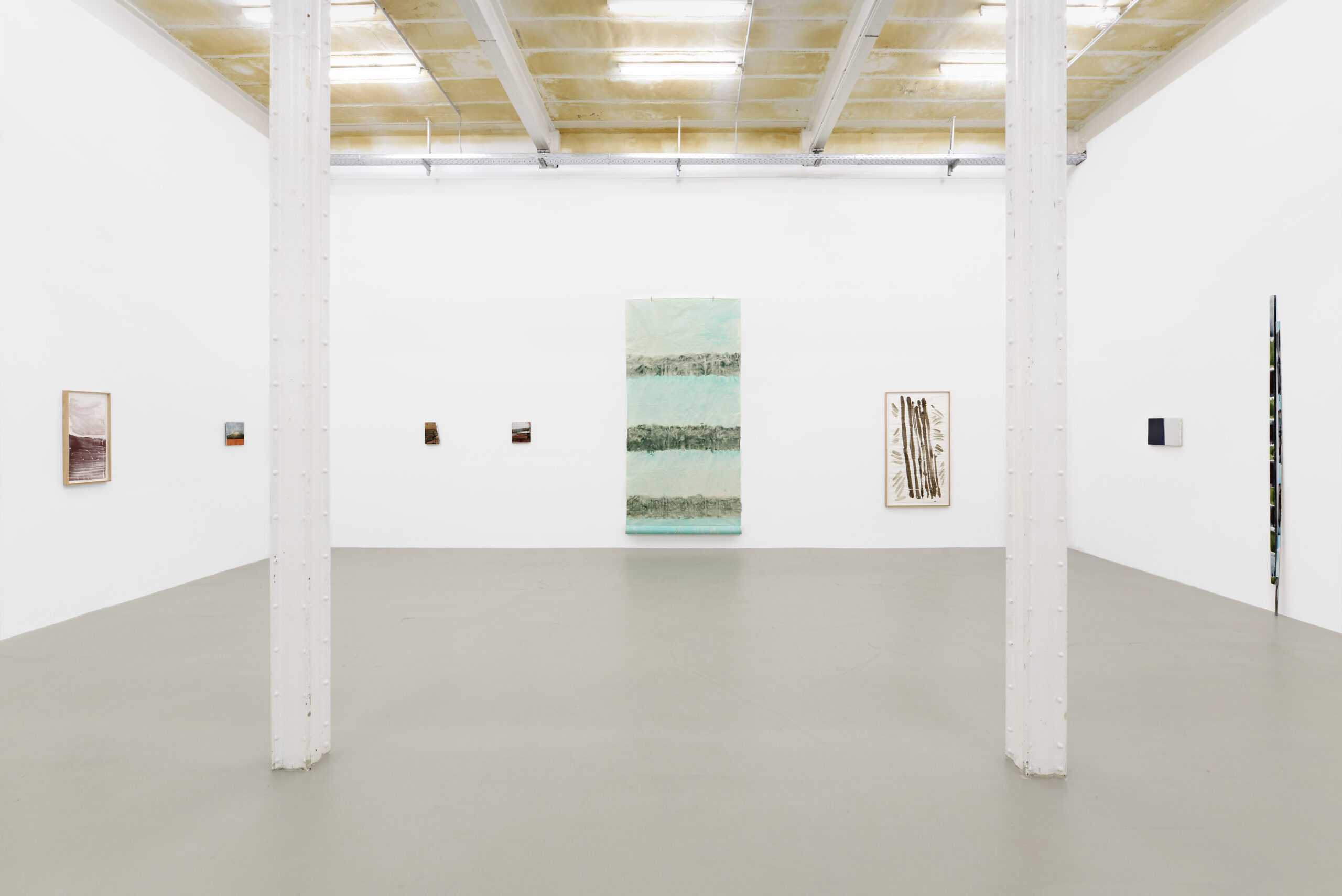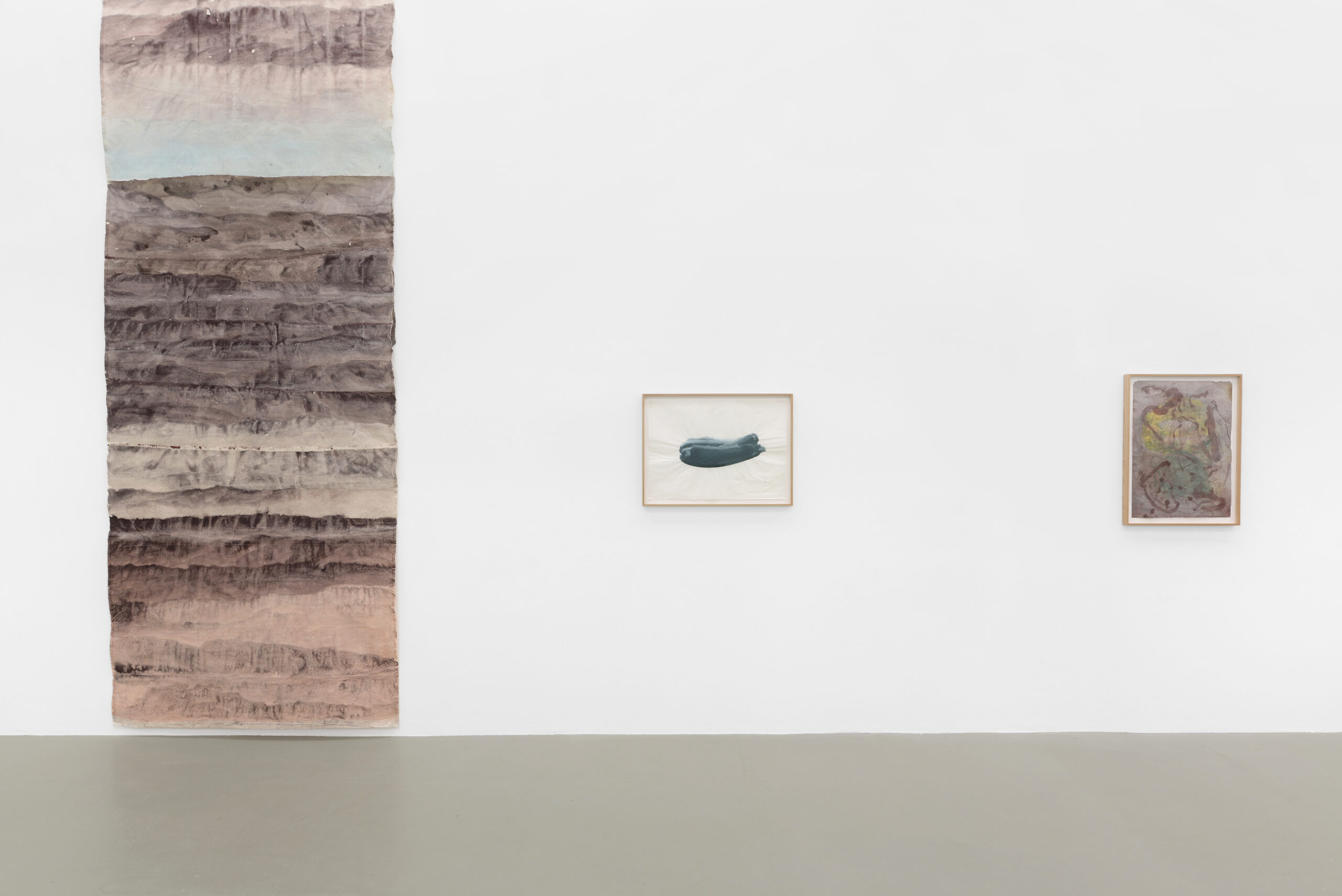
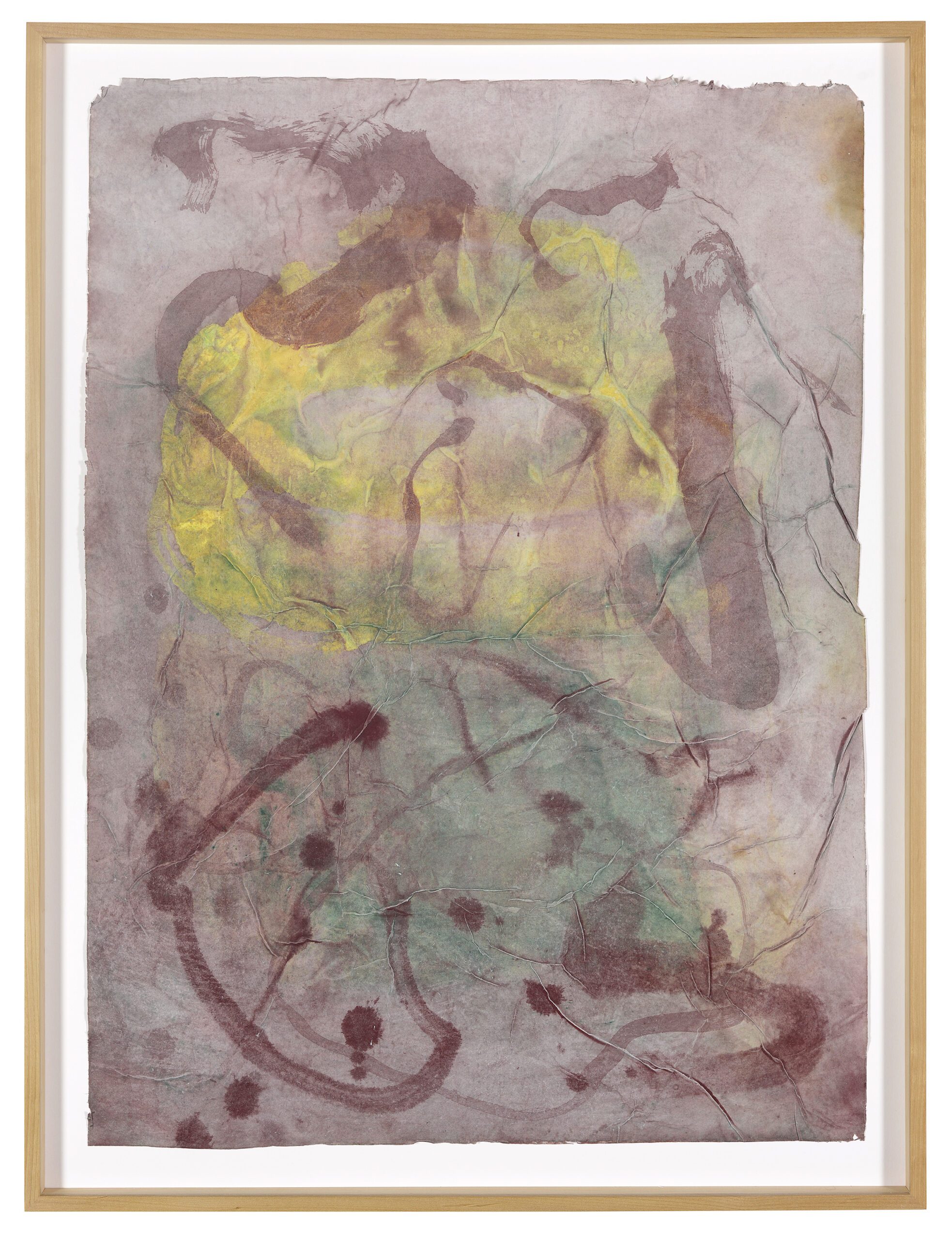
Tempera und Gummi arabicum auf chinesischem Papier
77×58 cm gerahmt

Kalkblau und Gummi arabicum auf chinesischem Papier, Monotypie
50×69 cm gerahmt
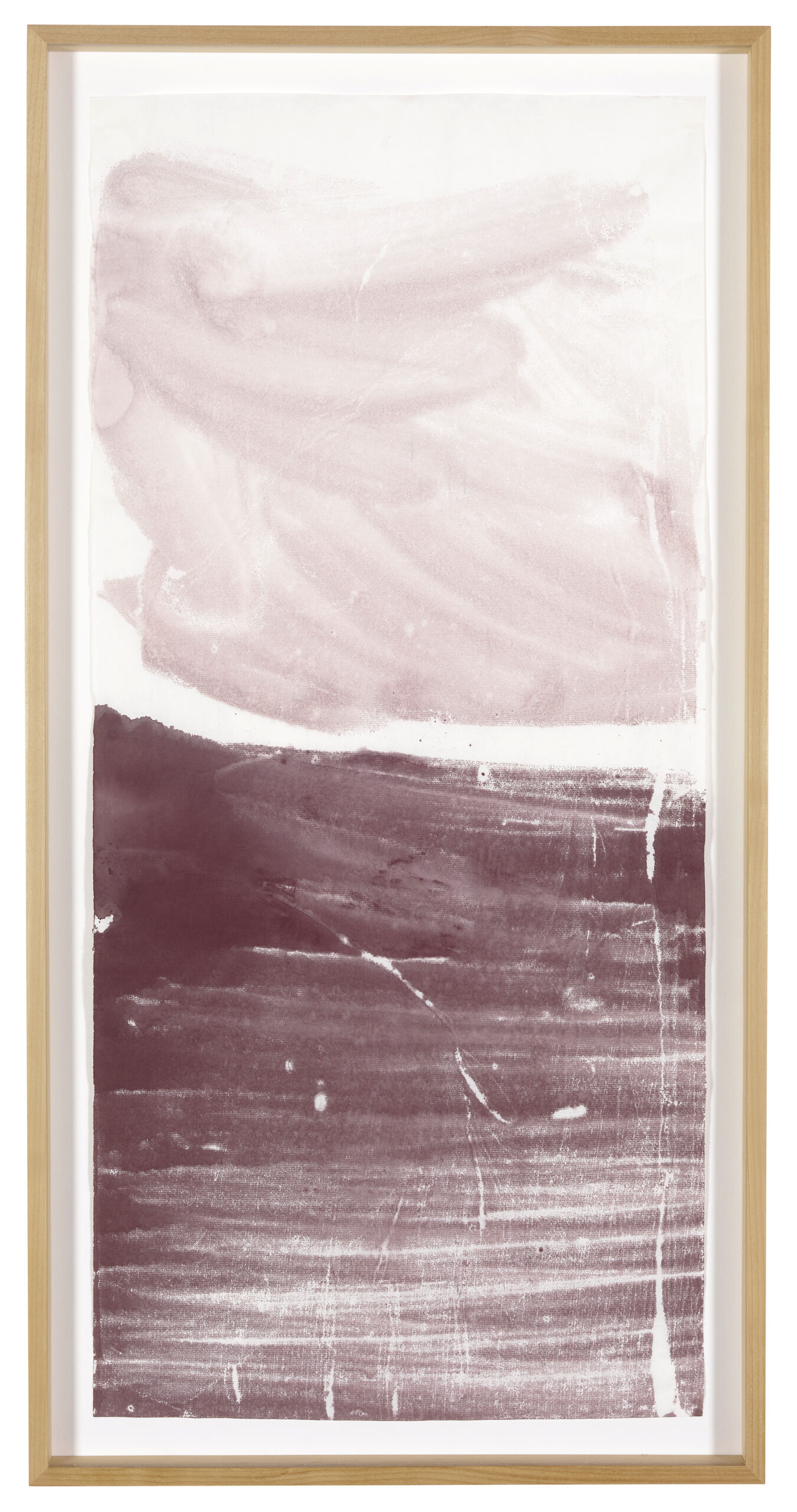
Caput mortuum und Gummi arabicum auf chinesischem Papier, Monotypie
69×32 cm gerahmt
Crossing the Great Stream
Material, self-discipline and landscape. In her third solo exhibition Selma van Panhuis presents pictures that she has worked on since her residence in Tao Hua Tan (Anhui province, China) in 2019. The title “Crossing the Great Stream” is taken from the I Ching, where it refers to the motif of waiting for the right moment to take on a great challenge and then meeting this challenge with ease. It evokes the image of a landscape that is expressed in Chinese through the juxtaposition of two words, such as mountain-water or wind-light. In contrast to the European understanding of the term “landscape”, which implies a general view, here emphasis is placed on an active intermediate state and on physical presence.
The artist’s works reflect this corporeality, which has partly to do with self-discipline – a suspension of the violence of external compulsions or constraints. Yet this corporeality is also a function of a specific positioning within the landscape, which always signifies an amalgamation of different elements, yielding a space that is perceived in its entirety. A landscape first becomes a landscape by means of an assembling view – at which point it must then be traversed. These two acts – the perception of and traversing of a landscape – yield through the medium of the human body the relationships between the individual elements. Selma van Panhuis’ images are representations of this sensory experience of space, often influenced by rural places, spiritual locations or ambient spatial perceptions from childhood.
The artificiality of every landscape is expressed here not in specific motifs but in the time-consuming production process and in the attention paid to the materials. The complex method involves the production of the colors using old formulas and the preparation of the painting surfaces with hide or bone glue primers. The images themselves are ultimately the traces left behind by these processes. Untreated materials such as cotton are used and the artist mixes the natural binding materials and pigments herself. In these artisanal experiments and in the emphasis on material effects through the combination of wood, cotton or plaster, a physical sense of the landscape is generated. In the reflection of the architectural conditions of the exhibition space, Selma van Panhuis creates atmospheric settings that facilitate an emotional engagement that extends beyond the realm of the material.
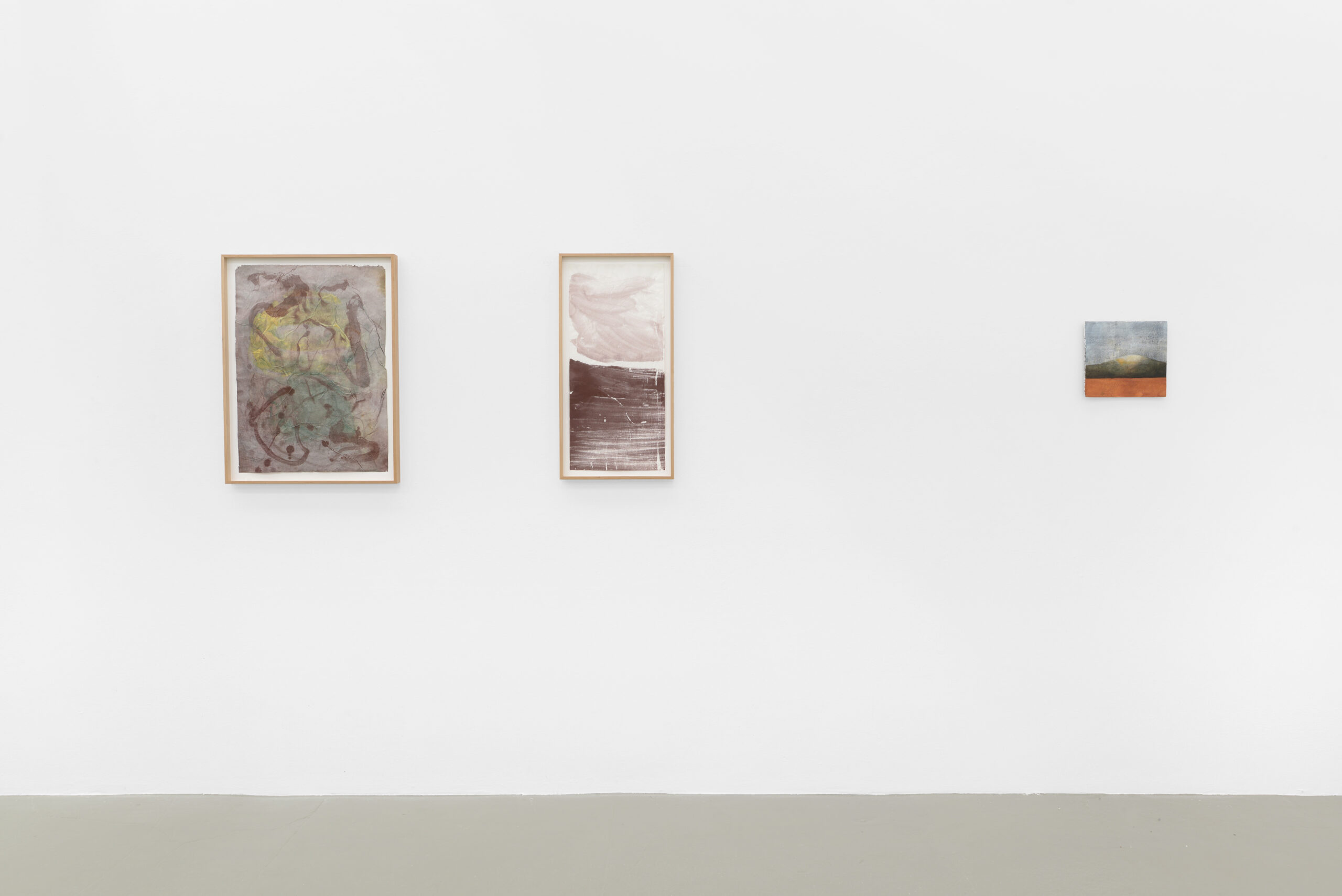
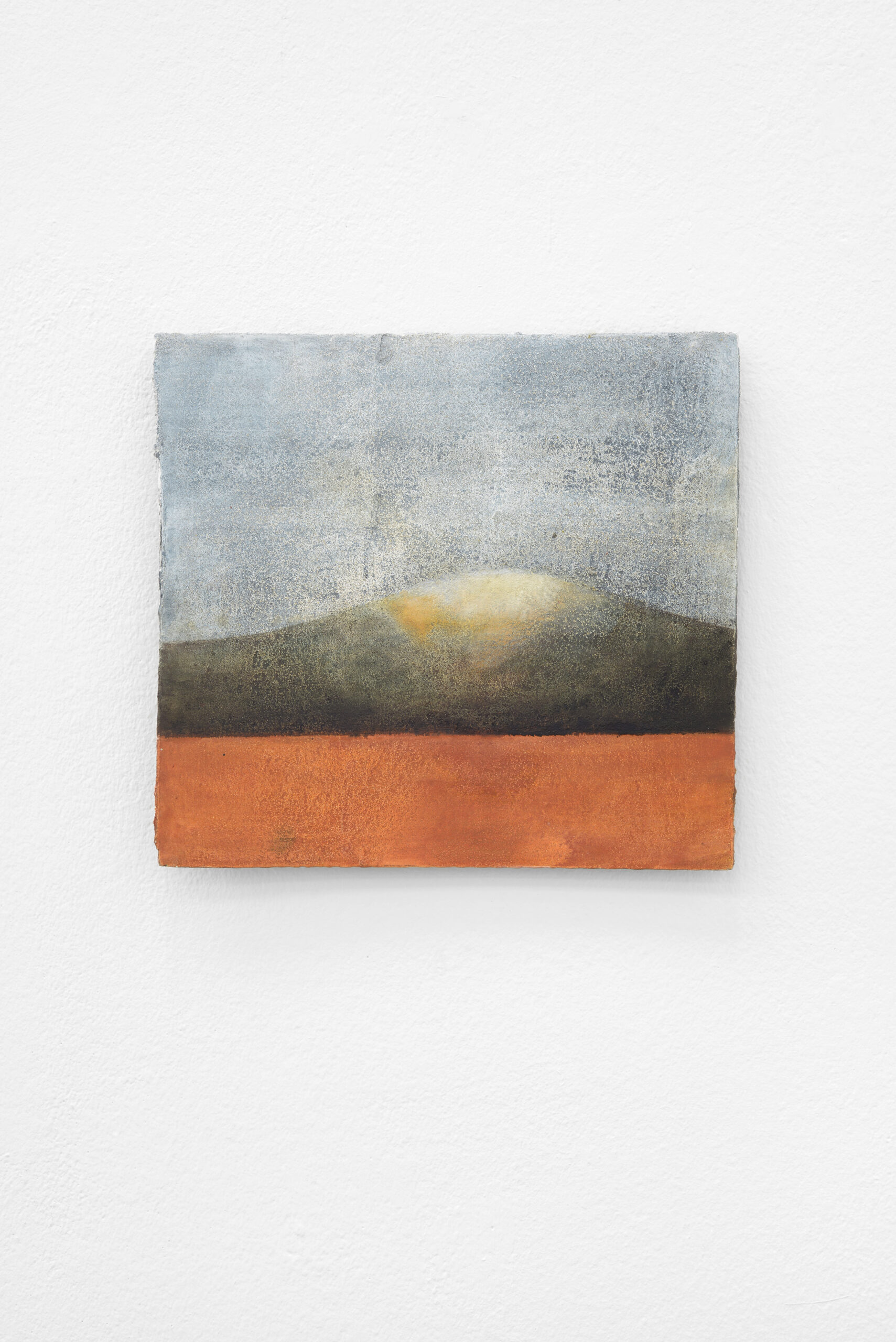
Tempera, Knochenleim, Kreidegrund auf Hartholz
25,5×27,5×0,5 cm
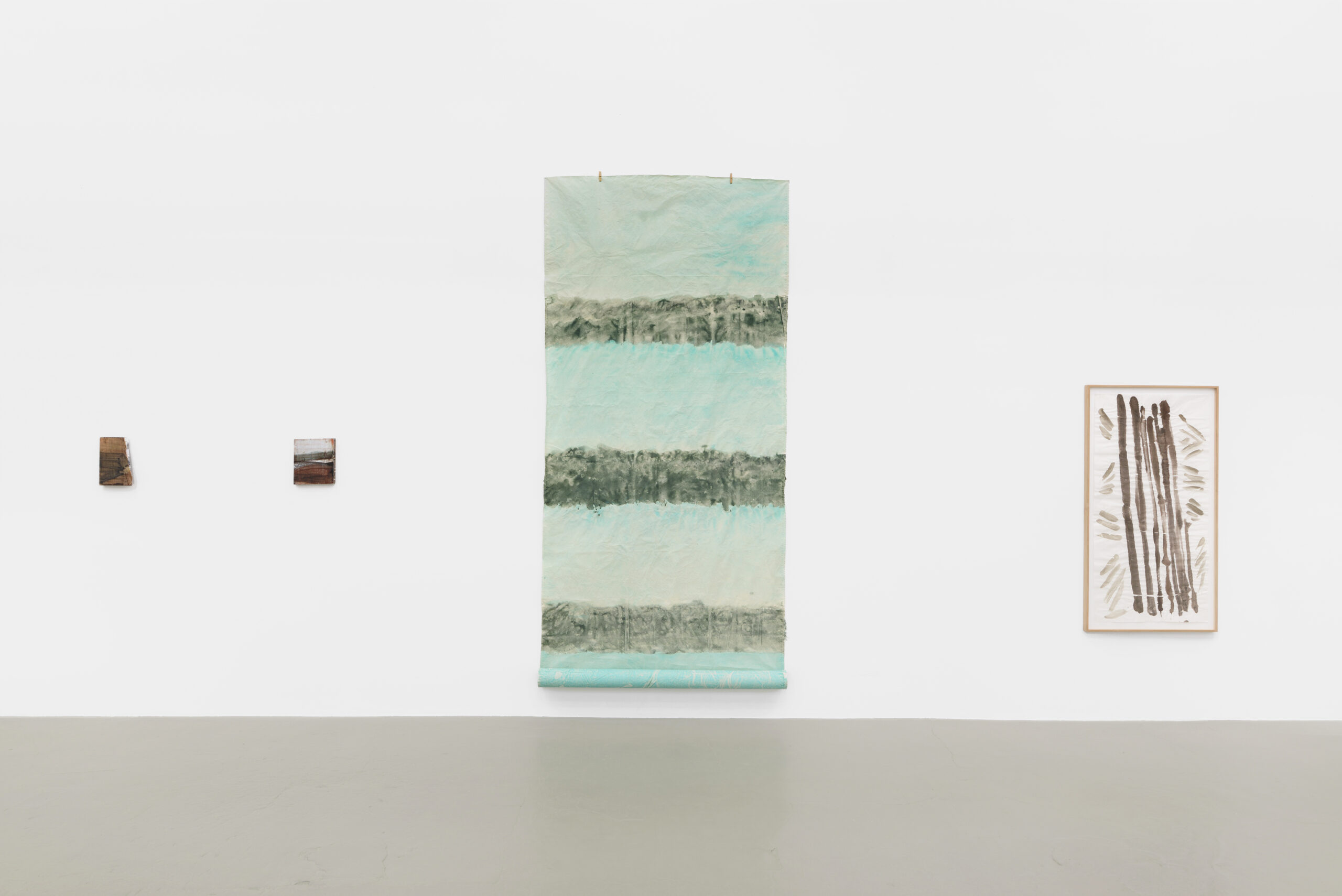
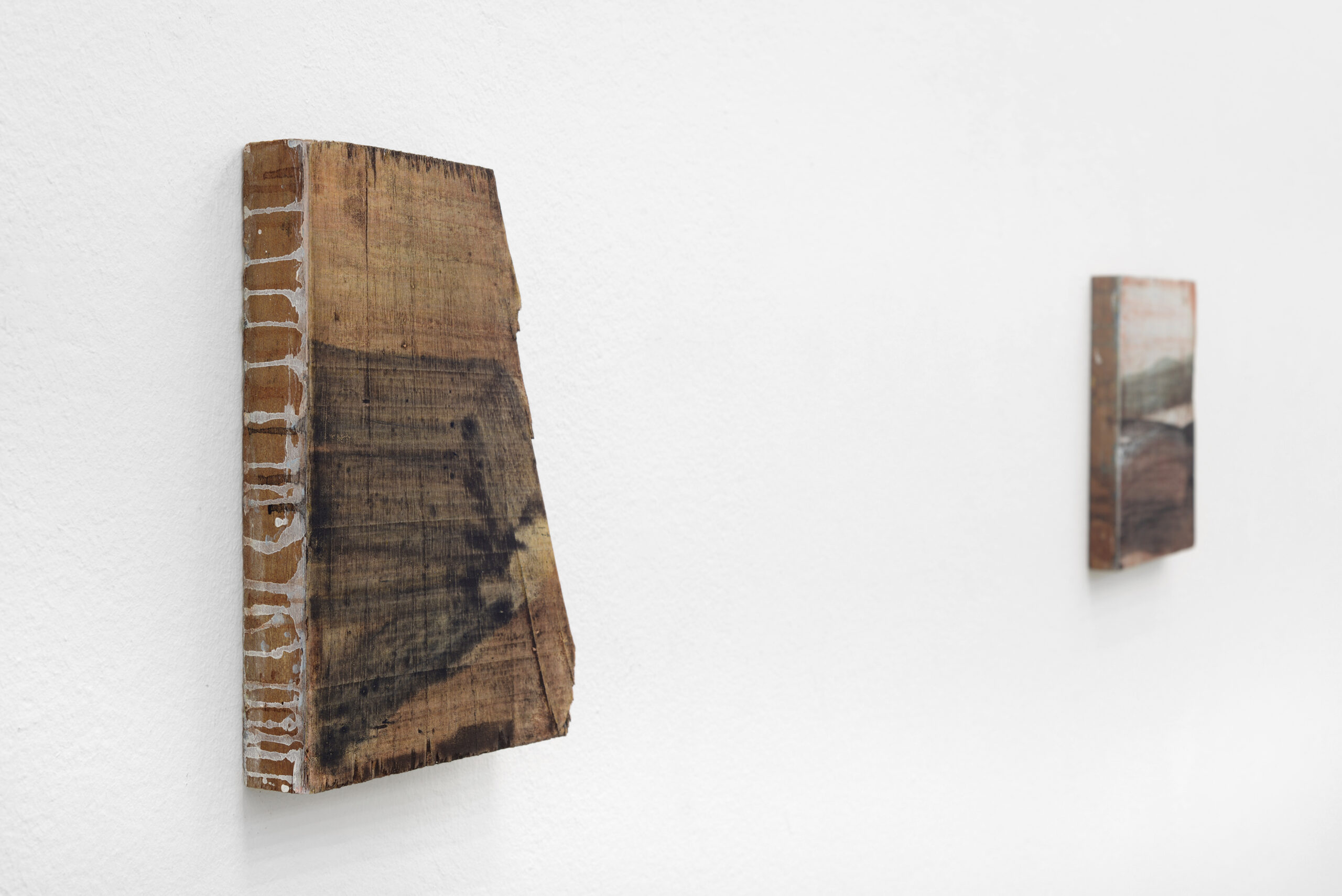
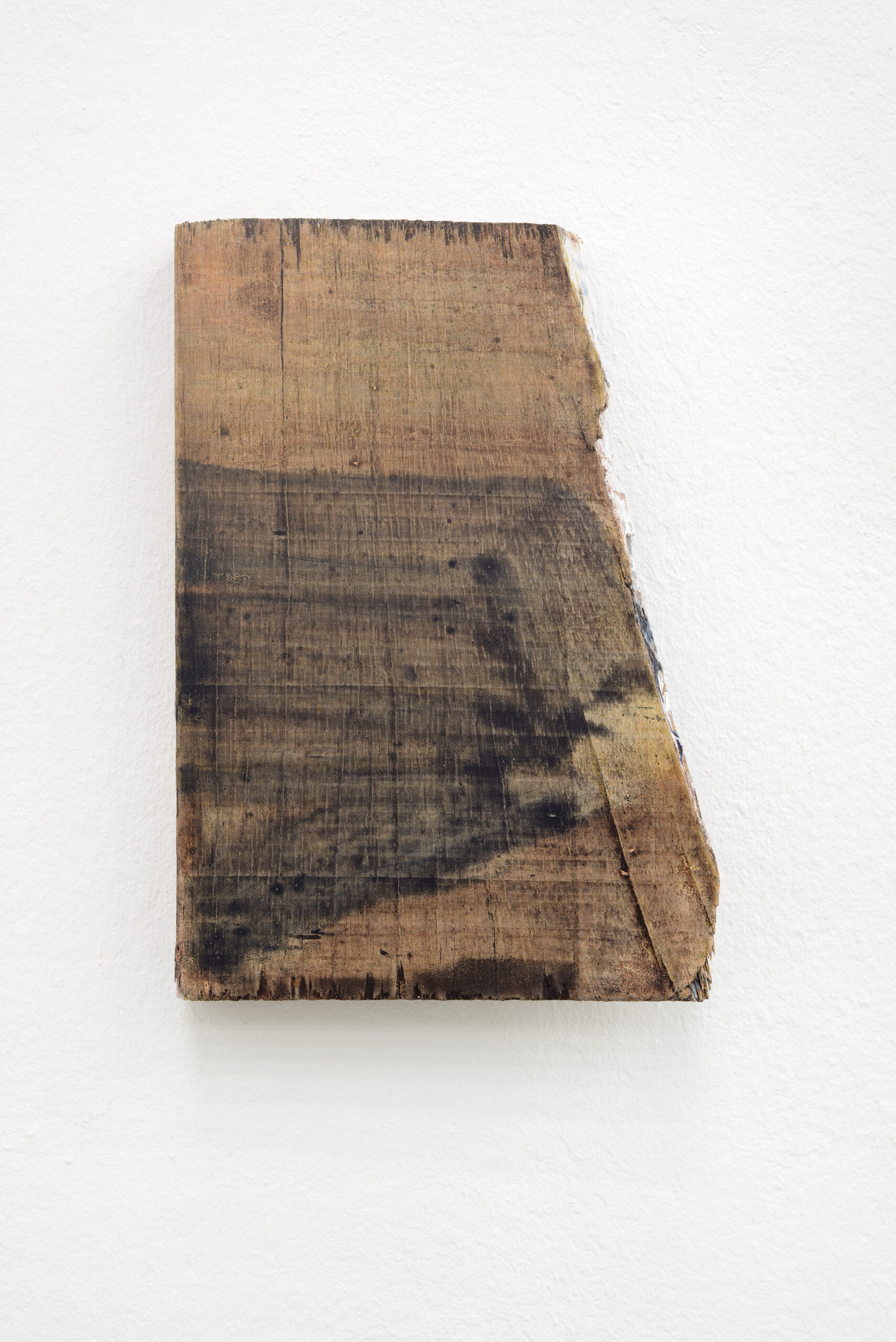
Tempera und Knochenleim auf Hartholz
28×19×4 cm
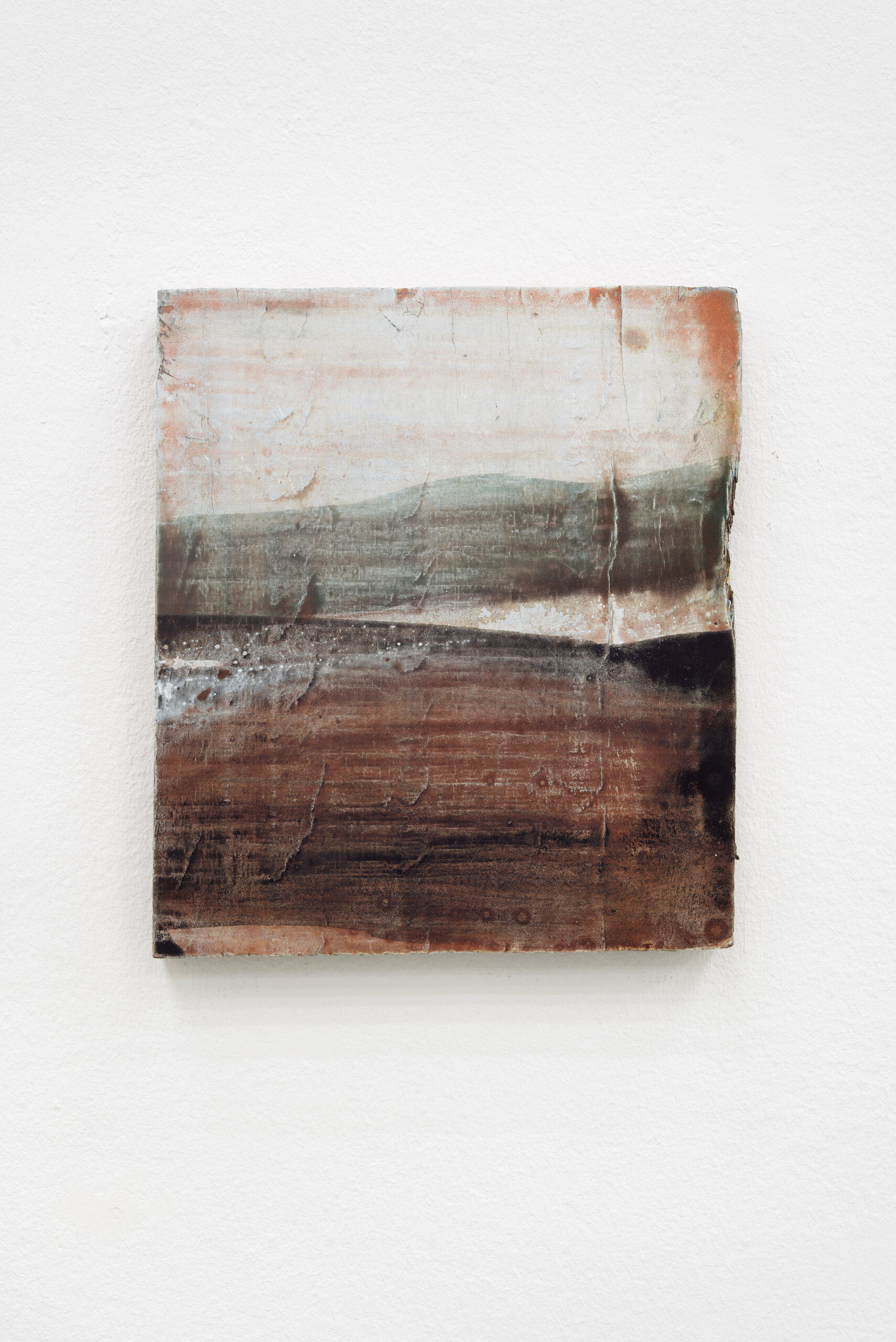
Tempera und Kreidegrund auf Hartholz
26×23×3 cm

Hautleim und Pigment auf Baumwolle, Papprolle
296×143×11 cm

Gebranntes Umbra und Gummi arabicum auf chinesischem Papier, Monotypie
131×69 cm gerahmt
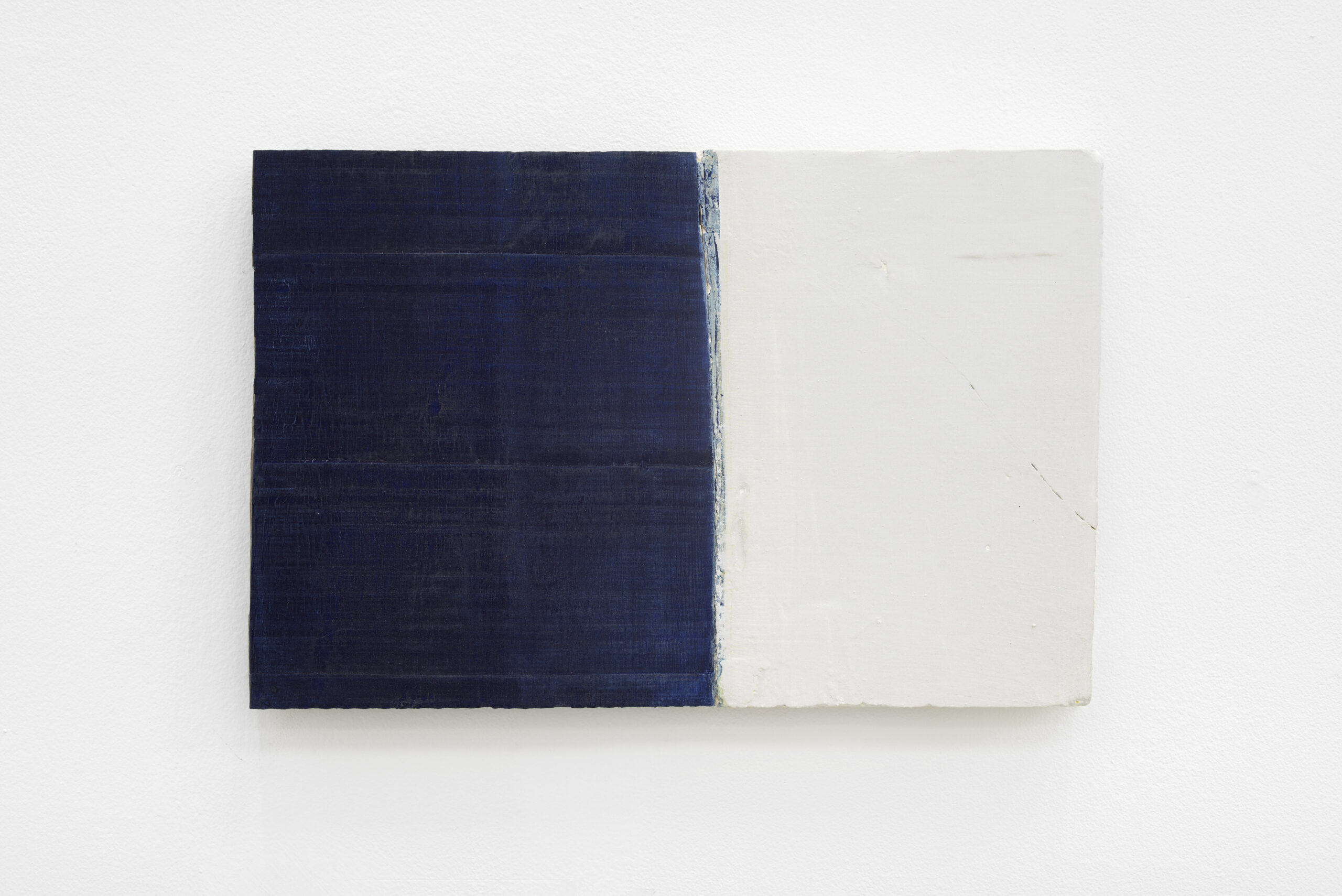
Tempera auf Holz und Kreidegrund auf Gips
27×41 cm
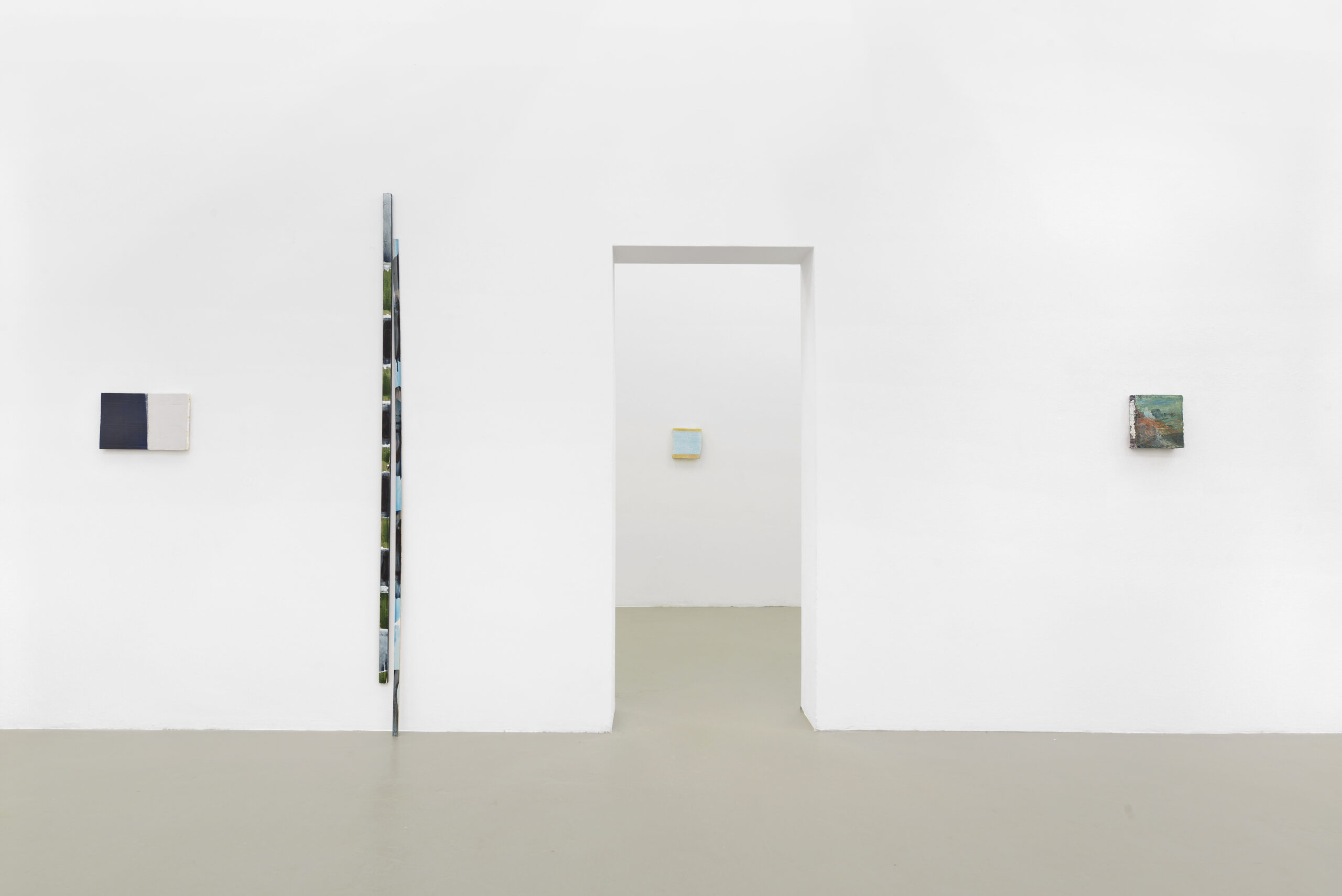
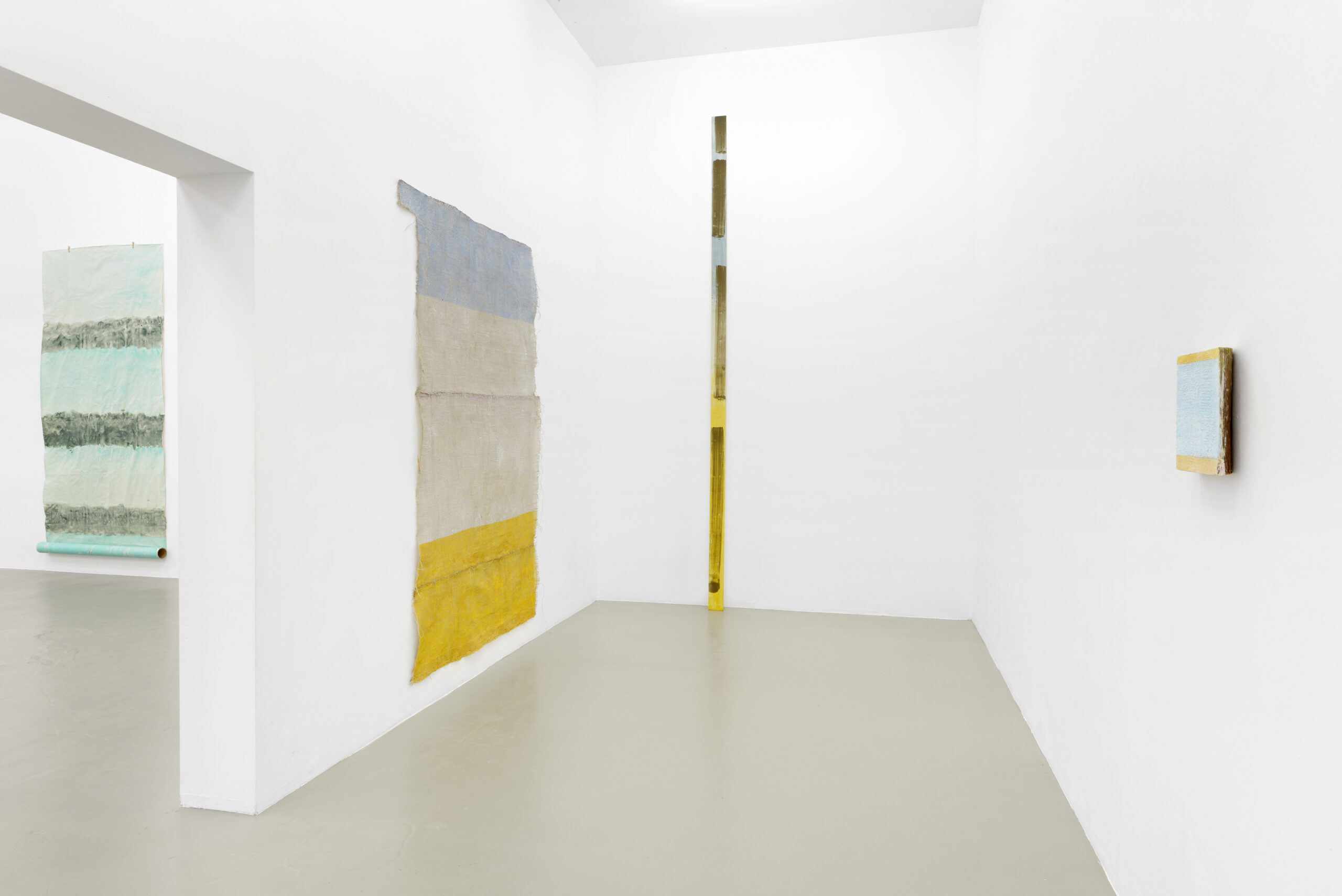
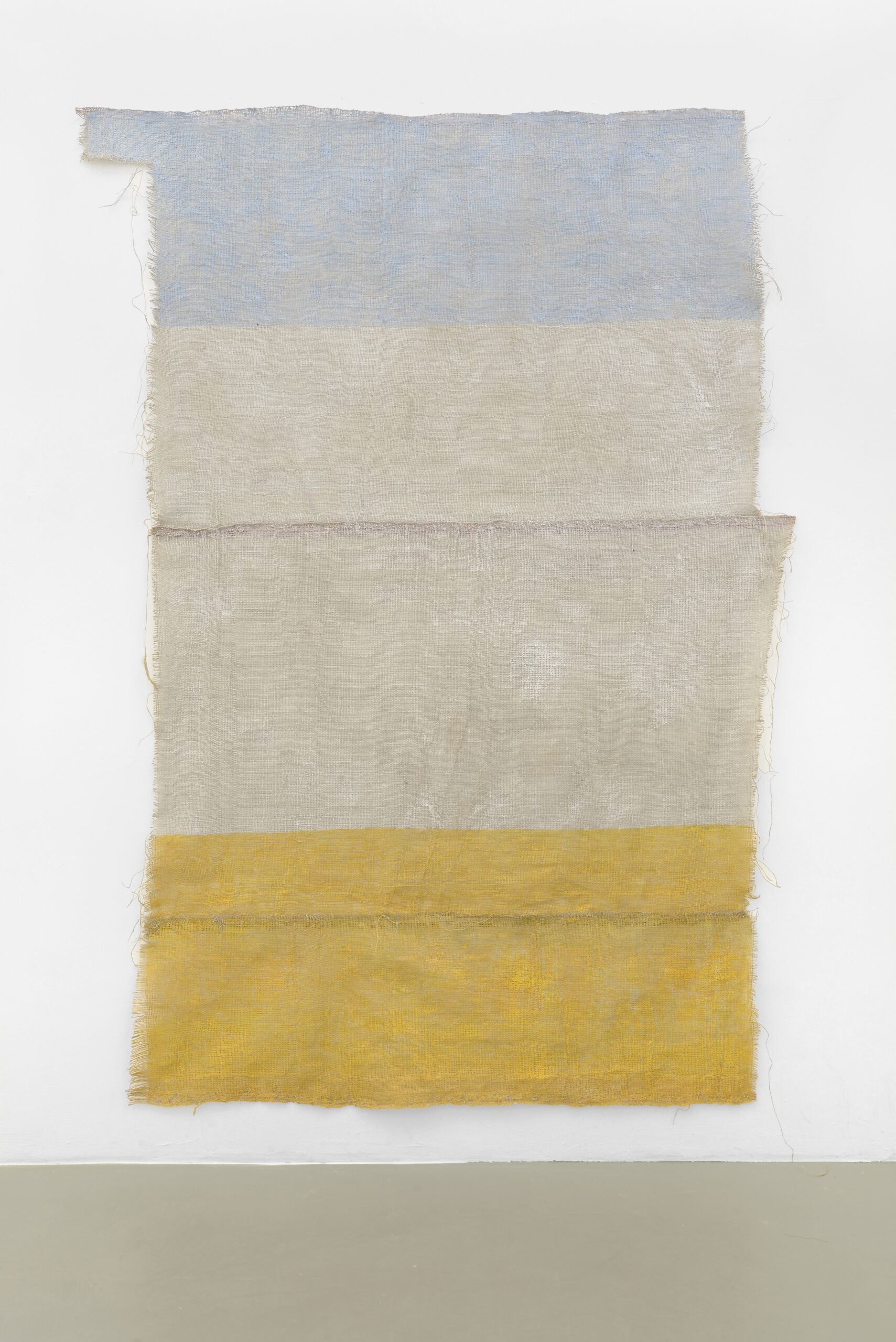
Tempera und Kreidegrund auf Jute
250×175 cm
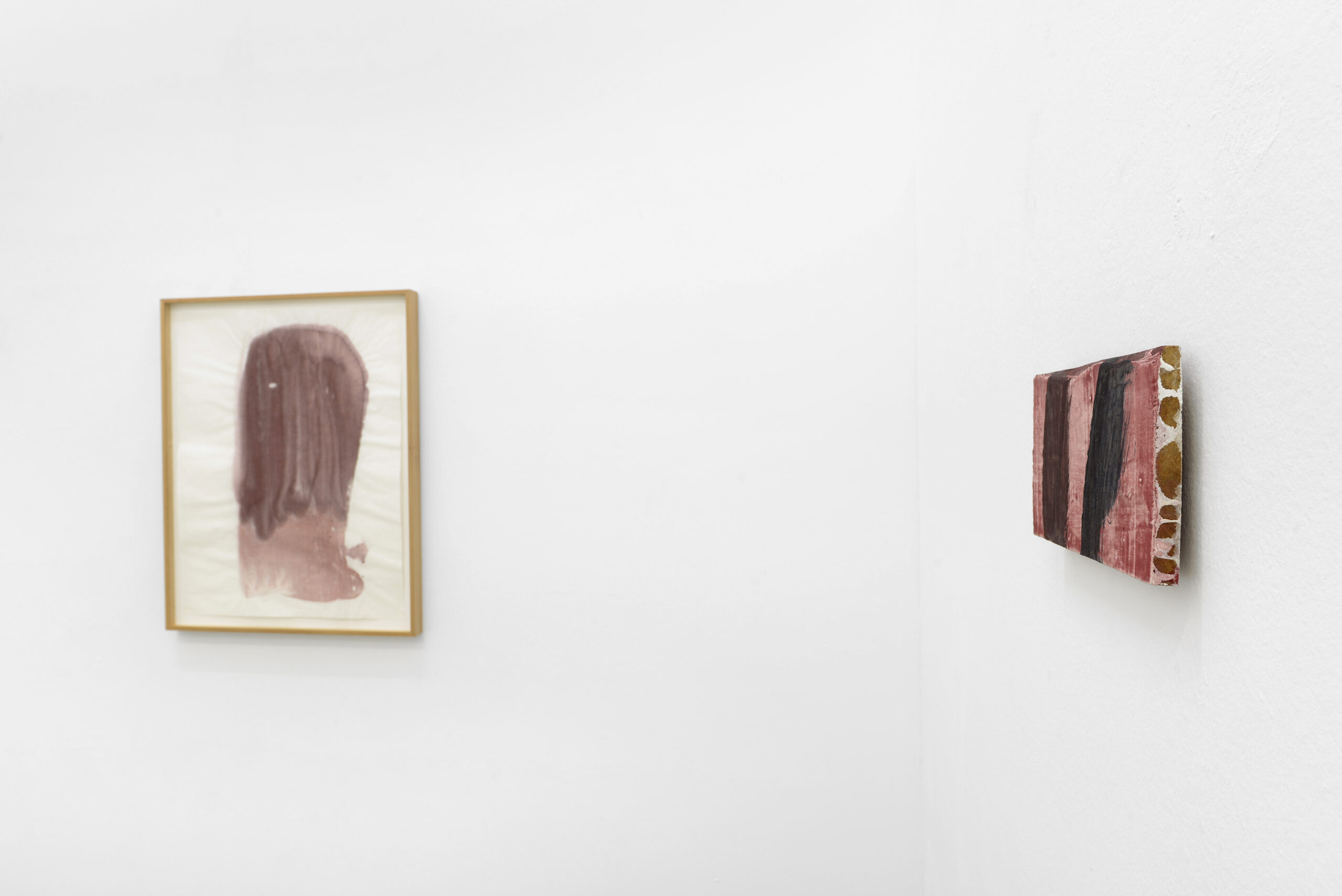

Tempera und Kreidegrund auf Hartholz
14×27×1,5 cm
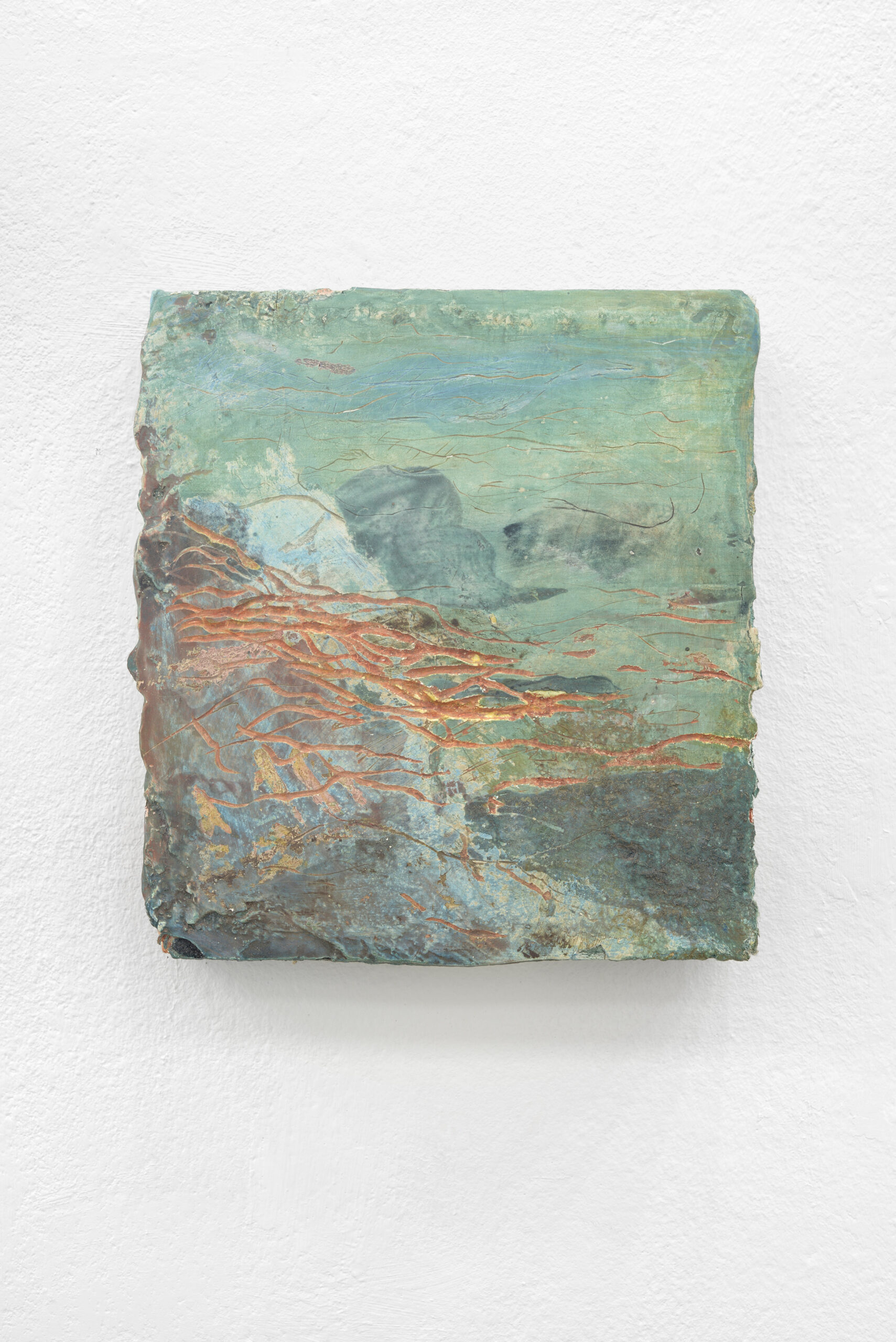
Tempera auf Gips, Jute und Hartholz
26×23,5×5,2 cm
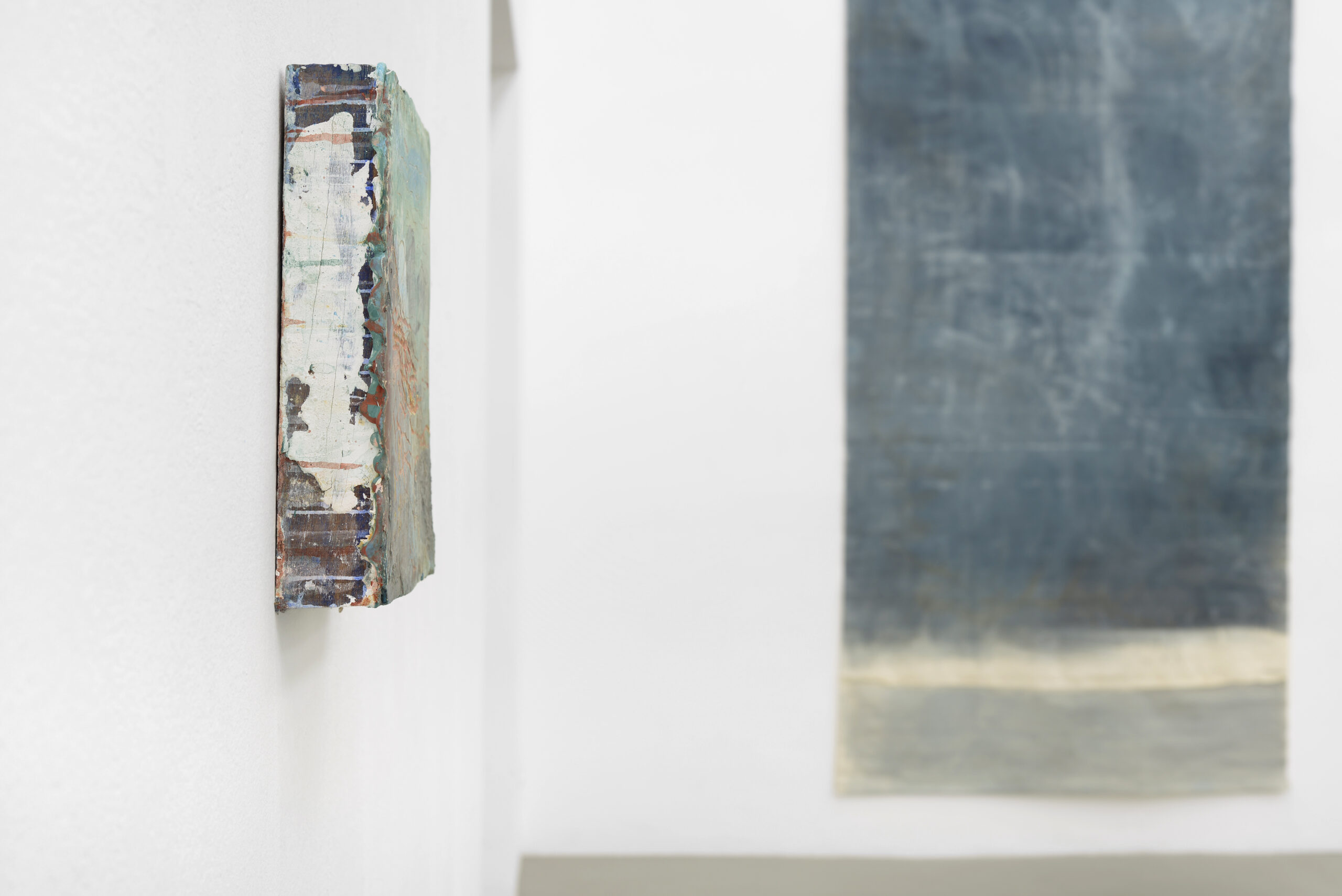
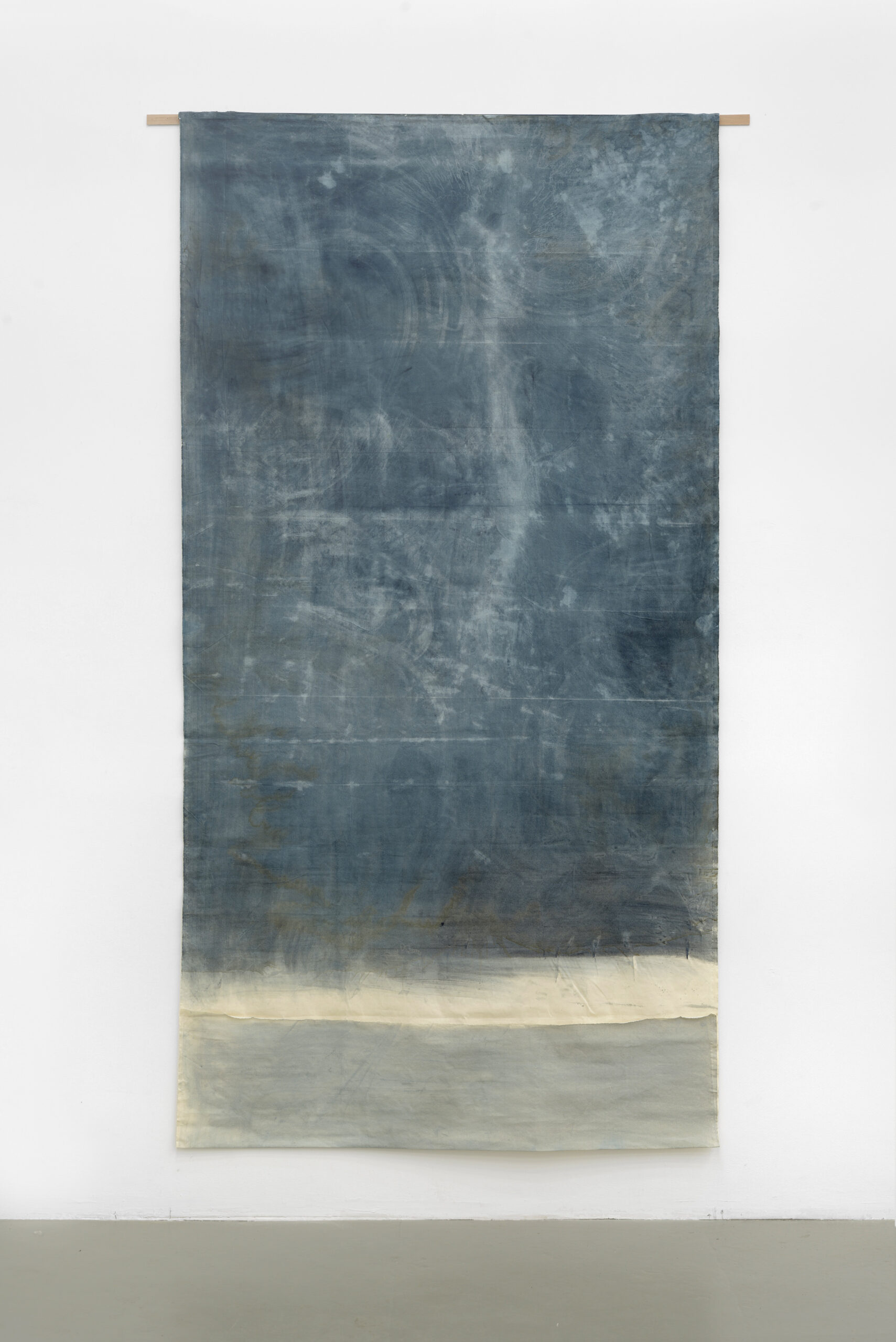
Hautleim, Pigment und Tri-art Acryl auf Baumwolle
285×150 cm
